Sinai Mountain Trek - Egypt (Saint Katherines Mountains)
- Maya Mohaban

- Jun 26, 2022
- 12 min read
Updated: Jun 29, 2022
Sinai is a trekking wonderland for Israeli backpackers and for Christian pilgrims from all over the world. It seems like a fantasy land: hard rough Granit rocks towering up to 2,400 meters altitude, rolling valleys filled with stone huts and Mediterranean orchards, springs and pools of cold refreshing water in the middle of the desert, vast open spaces all around, churches and chapels built on the very edge of cliffs and mountain tops and the glimmering red sea waiting for you at the end of the trek before you go back home.

This isolated desert trek will take you deep into the Sinai desert of Egypt. Through incredible desert orchards in the valleys of the mountains, filled with fruit trees like apricot, mulberry, dates, grape vines! The mountain tops like Abas Basha, Saint Katherine Mountain and Jabel Musa tell us old stories of pilgrimages and monks and Bedouins living together in this extreme desert. Sinai is magical in its own way, in a way I've never witnessed before in the world, the silence of the mountains, the green valleys, the hospitality of the Bedouins - all of these make this a trek like no other.
Trek Summary
Days: 4
Best Season: Early spring to late autumn
Difficulty Level: Difficult
Geographical Area in Israel: Sinai Peninsula – Saint Katherine Mountains

The important details you need to know in order to hike this trek:
Detailed map link
It is fairly difficult (on the border of impossible) to obtain a good map of Sinai, even online apps don't offer anything really informative. This is the best map I could find. Since you'll be hiking with a local Bedouin guide at all times, you're destined to be safe in these mountains and not get lost. This map should give you a general idea of where you're hiking.

General information about trekking in Sinai and costs
1. Border Crossing – The Taba border with Egypt is a land border, there is a fee on the Israeli side (100 shekels, you can order ahead of time here - https://borderpay.metropolinet.co.il/en/ ) and on the Egyptian side (405 Egyptian Lyras). For more info on the border (opening hours and such), here: https://www.iaa.gov.il/en/land-border-crossings/menachem-begin/about/
2. Guides - First thing you should know is that in Sinai, you have to trek with a Bedouin guide (Dalil, in Arabic), it’s forbidden to trek alone. The good thing is that the Bedouin guides here are locals, know every plant, path, water source and are usually very friendly (some of them talk English, a lot of them know basic Hebrew). Cost – about 300 Egyptian Lyras a day. To organize a guide, you should contact Fox – the best (and almost only) travel agency in the mountains. Phone numbers (you can contact them via WhatsApp):
- Faraj (the head of the travel agency, Fox): +20 109 473 2417
- Hussein (dalil, works with Fox): +20 100 249 8596
- Nassar (dalil, works with Fox): +20 100 779 6413
3. Camping – In this mountain region it is prohibited to camp anywhere, rather you sleep inside the orchards of the Bedouins from the village below. Your guide will know which orchard is open for campers and who to talk to. The orchards are absolutely beautiful, and from late spring onward there are plenty of great fruits: mulberry, figs, apricot! Every orchard has a water source and they will usually give you firewood if you’d like to enjoy a bonfire. They also offer you slim mattresses, but you do need a sleeping bag. Cost – 50 Egyptian Lyras per night.
4. Camels – If you want to carry all of your equipment with you on your back, you definitely can (that means sleeping bag, clothing and food for four days). Another option is to take a camel, you won’t see them most of the day (they have easier routes to get from one orchard to the next) and one of the Bedouin guides will herd the camel. Cost- 300 Egyptian Lyras per Camel. 1 camel for every 3-4 people should be enough.

Seasons for Trekking
This trek is suitable (weather wise) from March to November. The Altitudes in this Mountain range are between 1600-2600 meters, and winter can be pretty harsh here. It’s a very arid, extreme desert area, but the altitude here brings below zero temperatures and snow almost every winter season. The best months to hike in this area is March-May and October-November. June, July and August are also possible (it’s hotter and you’ll have to rest during the noon hours). December, January and February are very cold months with a possibility of flash floods, snow and freezing nights, but still possible to trek. Be aware that flash floods can occur in this area during all but the summer season so make sure to check the weather report before you head out. Do not attempt to hike this trek during heavy rain. If you’re trekking during summer time sure to check the weather for scorching hot days. Check out seasons in Israel for more information.

Transportation
To starting point of this trek is the Saint Katherine village in the Sinai Mountains, about a two-hour drive from the Taba border between Eilat and Taba. To get to Eilat you can take a bus from Be’er Sheva, Tel-Aviv, Jerusalem or Haifa. For the bus schedule and bus information here. From Eilat’s central bus station you need to take a bus or taxi to the border, a taxi should cost around 40-50 shekels. If you’d rather take the bus, you should find bus number 16 or 30 that leave the bus station every 30-60 minutes.
For more on trekking in Israel using public transportation here.
By car – You can arrive at Eilat by car, but there is no parking area near the border, so you’ll need to find a parking space in the city (the old airport has a free parking area), and from there take a taxi to the border. You can even cross the border with a car, it requires some beau racy, but possible. Transportation from the border: most people take a taxi from the border to the mountains, about a two-hour drive. For a small bus (13 people) the cost is 1500 Egyptian Lyras. You can contact Jamaia to organize the transport: +20 100 290 4746
Water Supply
While trekking in the mountains in Sinai, you’ll drink from water sources – wells, cisterns and springs. Your Bedouin guide (Dalil) will know when and where you can fill up water, you’ll meet a water source at least once a day, and you should carry around 4.5 liters with you during the day.

Food
You can bring all the food from Israel for the trek. You can also buy some things at the small market in Saint Katherine, I’d recommend buying at least pita bread and fruits and vegetables in the market. They also have a cheese called Feta that is so fat, it never goes bad, so it’s great for the mountains!
Precautions and Dangers
1. Flash floods - The desert area in Israel is prone to flash floods. The lack of vegetation in the desert and the type of soil makes it hard for water to seep down. When there is enough rain in the desert, it flows on top of the surfaces to the lowest places- river beds. Most of the riverbeds in the desert are dry all year round, except for a few days when it rains. The rivers then come to life, and it is very dangerous to be hiking in a riverbed during a flash flood. In some areas it can be raining even a few kilometres upriver from where you are and the flash flood will come out of nowhere, splashing down the riverbed and taking everything, it can with it. The tricky part about flash foods is that the riverbed does not flood gradually, it comes at you at lightning speed. Precautions for flash floods:
a. Check the weather in the designated hiking area before you leave.
b. Do not attempt to hike if there is a rainy weather report.
c. If you do find yourself in the desert during heavy rain, make sure to get out of any riverbed near you, climb to the highest, safest point you can get to and contact someone for help. If there are flash floods around you, it can keep flowing for hours and even days, contact someone to get you out of there safely.
2. Heat stroke- It can get hot during the day in the desert, even in freezing January. The days are hot and the nights are cold. Make sure to always wear a sun hat, take long breaks in the shade and refresh yourself in pools and springs along the way.
3. Dehydration- The desert can get really hot, and it is usually very dry. Even during the winter season, remember to drink a lot. Do not take less than 4.5 litres of water with you per day per person. You should wear sunglasses, a hat and a long-sleeved shirt. If you’re feeling dizzy, nauseous or/and have a headache, you’re probably dehydrated. Find a shade to rest and drink your water slowly and gradually.
4. Animals- There aren’t any big dangerous animals in the desert. Beware of snakes and scorpions, especially during the spring time and around your campsite. In the morning shake your boots before you put them on and beware when you pick up rocks.
If you find yourself in an emergency situation, your Bedouin guide can help you contact the police or medical assistance, but you should know that this mountain region is very isolated and a few hours drive from any good hospital (the closest one is in Eilat). If you have to leave the mountains, as you get closer to the border, you’ll have cell reception into Israel and you can call 101 and have an ambulance meet you at the border. The direct number for the rescue team in the Eilat region is 050-6276442.

Trail Description
Day 1 (5 k"m, 3.5 hour hike, 200 meter ascent throughout the day)
In order to start the hike at 15:00 in the afternoon, we needed to cross the border at 6:30 (it was also Shavuot – a Jewish holiday – and we knew the lines would only get longer as the day progressed. Once we crossed the border we arrived at “Sinai time” or “desert time”, meaning everything happens at its own pace, which is usually slowly. It’s just the way it is in Sinai, and it’s better to just see it as a good way to become part of the culture and of the desert. We met our minivan and were off to the mountains. We enjoyed a beautiful road through mostly sandstone rocks and cliffs of all colors. Once we got to the village Saint Katherine, we met the Granite rocks and mountains towering above us, these are the mountains we will hike through for the next 4 days!!

We arrived at the Fox agency, which is also a great little hostel with rooms, shared showers and bathrooms and most importantly – a lot of shade!! We got together our things, gave our big luggage to the camels, bought some food at the local market (the bakery is incredible!) and got a lift to the edge of the village to start our trek (the life cost us 100 egyptain lyras).

The first day was relatively short. We started by hiking up a small pass from which the village spreads down before you on one side and a beautiful valley on the other side. From the pass, the path winds down slowly on an easy path along the Quiez wadi, all the way to the valley, where we found the first spring (clear, cold and refreshing drinking water!) and a cool cave (shade again).

From the spring and cave, we hiked upriver, along the Small Talle (or Tubog) wadi, through a series of great big granite boulders which we had to clamber on top of. We stumbled upon to amazing pools that are not for bathing in, because its water for drinking - the most refreshing and delicious gulp of water I've ever hard! Parts of the hike here were quite challenging. After about an hour and a half we reached a small water pool, which wasn’t fit for drinking but great for our first desert bath! From the pool we hiked up a wider wadi, called Zautin, along incredible desert orchards filled with flowers and fruit: grape vines, pomegranate, palm trees, mulberry, apricot and more. Most of the fruits are ripe during May-September, the best time to hike these mountains, even if just for these fruits!

We spent our first night here in a beautiful orchard in Wadi Zautin, eating apricots all evening, enjoying a bonfire and an infinity of stars.

Day 2 (10 k"m, 8 hour hike including 1000 meter ascent throughout the day and 500 meter descent)
From Wadi Zautin we started climbing up to a pass from where we took the path up to Abas Basha (an incredible ruined fortress from the 12-13 century on a mountain top, an amazing view). The way up (to the pass and to Abas Basha) was pretty comfortable, a snaking path that seems to never end (it's about a 700 meter ascent), but definitely rewarding at the pass and also the fortress and mountain top. It’s about 2 hours hike up to the top of Abas Basha (around 40 minutes from the pass to the top).

Once you’re back on the pass you’ll start heading downriver along Wadi Tinia on a very comfortable and easy path.

After a while you’ll start heading up along Abu twita path which will lead you to Farsh Um Sila – a wide valley with a water well, great huge stones (which offer some shade for lunch!) and cool rock sculptures left by hikers before you.

After lunch at Farsh Um Sila you’ll start heading along a 300 meter steep descent to Gulat El Azrak – the most refreshing and deep spring that the Sinai Mountains have to offer! Worth the descent, but tread slowly and carefully.
From the spring you’ll head upriver and reach the hidden pool (a beautiful spring that sometimes runs dry, depending on the season) and the berry wadi (black berries during the season in September!).

After another refreshing dip in the hidden pool, you’ll head upriver along the Wadi Big Tala until you reach Farsh Roman – your orchard and campsite for the night (great sunset from here!).

Day 3 (15 k"m, 1000 meters of ascents and descents, 8 hour hike)
This day is by far the longest and most tiring day, most treks in the area usually divide up the days differently. We wanted to climb Saint Katherine and Jabel Musa and enjoy the springs and Abas Basha, so we opted for this long day. Make sure to come prepared or be open for different paths if you're not up for long ardeous days. The day begins with an easy ascent up to a wide pass. From the pass you’ll head down towards Wadi Jubal and then head upriver along Wadi Jubal and Wadi Zautin (a bit of loop, you were here yesterday!). The last place to fill up water for the day is at Wadi Jubal, so make sure to fill up enough for the day.

The path will lead you to Wadi Shag, there you’ll meet a great seasonal pool and a bit of shade. From the pool you’ll climb Wadi Achmar – a pretty serious climb upriver along big boulders and rocks. Wadi Achmar will eventually lead you to the pass before Jabel Katherine. You can leave your bags here and just take water and a hat with you up to the mountain. From the pass it’s an hour ascent to the top and 45 minutes back down. It’s a pretty long arduous climb, but of course the view from up on the top is unbelievable. This is the highest mountain in Sinai – 2,642 meters, and on clear days you can see the Suez Canal!
From the pass you’ll head down river for about an hour and a half until you reach Dir el Arbain – the orchard and campsite for the night! This is the most visited and touristic campsite; you can enjoy the nice small natural pool they have here.


Day 4 – Jabel Musa! (9 k"m, 900 meter ascent and descent)
This day is pretty short, but still difficult, rewarding and amazing. The day begins with the long, exhausting climb up to Jabel Musa. Jabel Musa comes from the name Moses - the Christian faith believes that this is Mt. Sinai, where Moses was given the ten commandments. From the campsite you’ll head up for about 2 and a half hours until you reach the summit. The climb up is fit for camels and donkeys, which makes it an easy climb – a snaking path that goes back and forth and slowly gains altitude.

From Jabel Musa enjoy the view and the small chapel, they’re incredible and will take your breath away.
From Jabel Musa you can either head down to the Saint Katherine Monastery or head to the amazing wide valleys filled with ancient archeology from ancient times were monks lived all over the mountains. We passed through Farsh Znobar, Farsh Luza and Farsh Zafzefa - all valleys with old stone huts that used to be inhabited by monks and orchards.
From there the path will lead you down to Wadi Arbein, where you slept last night and to Wadi Quiez which will lead you right to the Fox agency and hostel in Saint Katherine, the village. You’ve finished your trek in Sinai!

Hope you enjoyed the trek, I would love to hear your thoughts about it! Contact me here! or comment below.
*Disclaimer*
It is the responsibility of the users of this website to be prepared for all possible conditions while trekking in Israel. Beware that conditions of trails may change day to day and season to season. All users of this website and its information assume full responsibility for their actions and judgments while trekking. The owner and authors of this site disclaims all liability including that of accident, loss, injury, or any other damage that may be sustained by anyone using the information contained on this website.
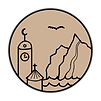.png)



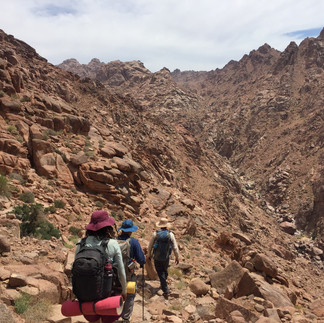





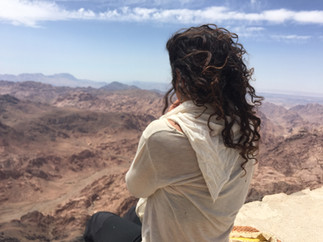


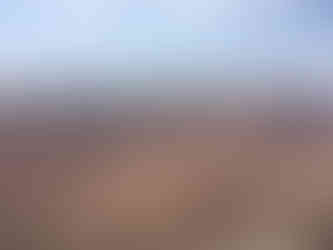








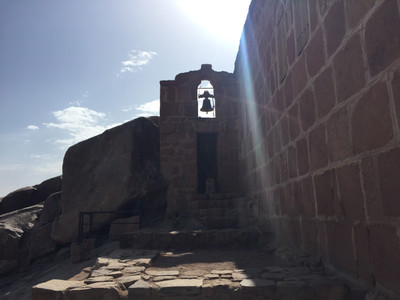



Comments